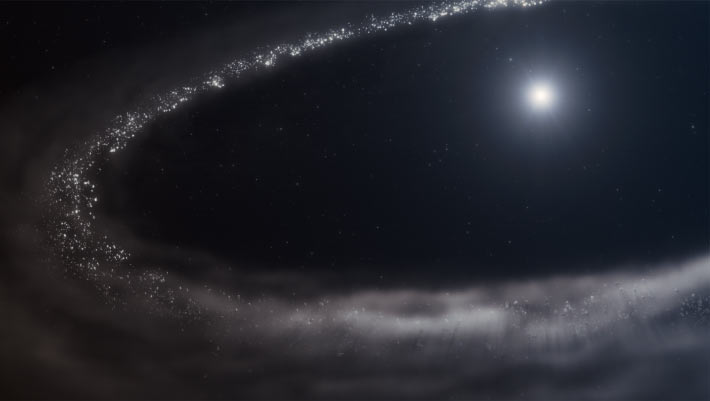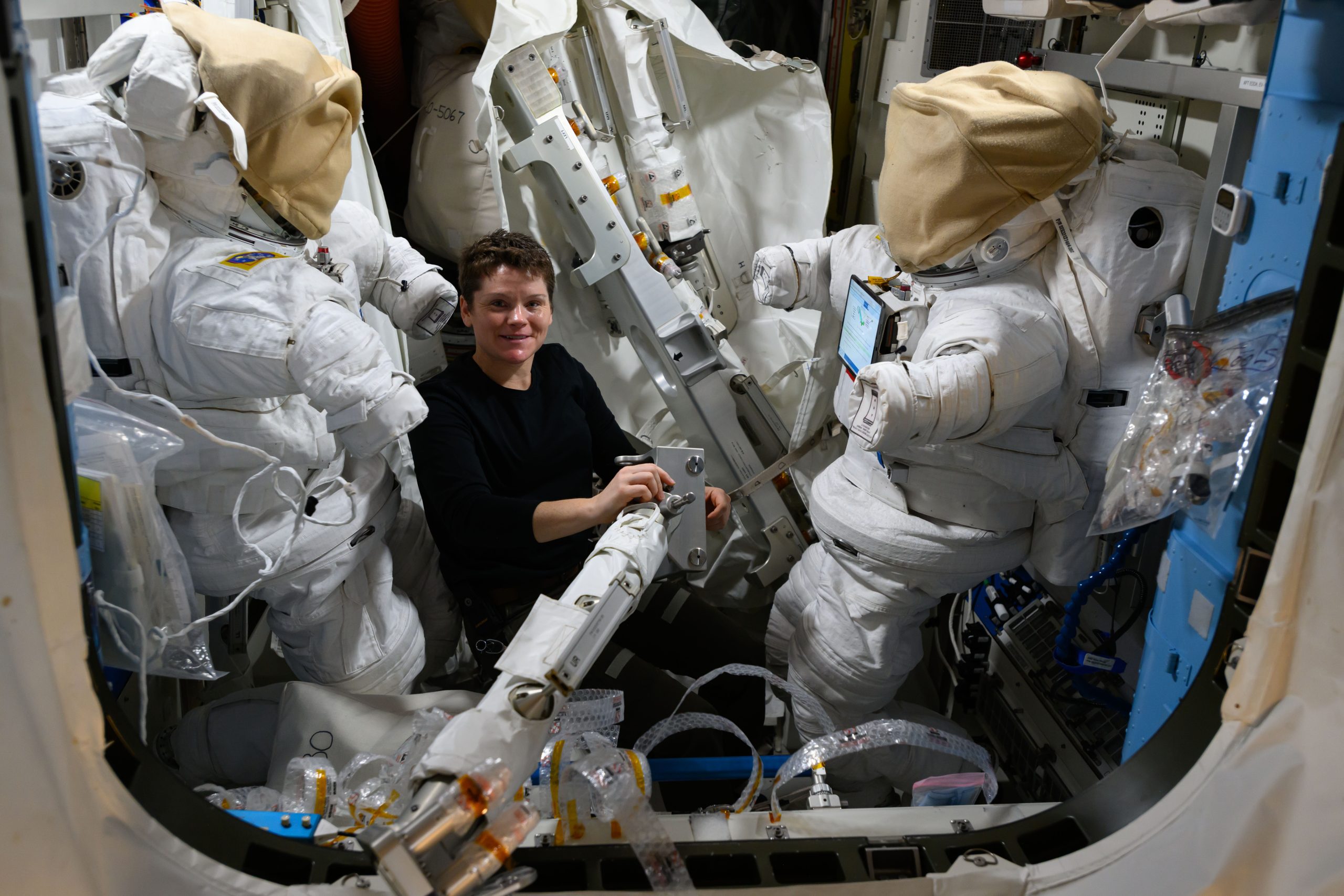Now Reading: Webb Telescope Discovers Water Ice in Young Star’s Debris Disk
-
01
Webb Telescope Discovers Water Ice in Young Star’s Debris Disk
Webb Telescope Discovers Water Ice in Young Star’s Debris Disk

Fast Summary:
- Revelation: Crystalline water ice has been detected in the dusty debris disk surrounding HD 181327, a young Sun-like star located approximately 169 light-years away in the constellation of Pictor.
- Star Details: HD 181327 is about 23 million years old with a mass roughly 30% greater than the Sun.
- Detection Method: Johns Hopkins astronomer Chen Xie and colleagues used NASA’s James Webb Space Telescope and its near-Infrared Spectrograph (NIRSpec) to observe faint dust particles in the debris disk.
- Debris Disk Composition:
– The outer area contains over 20% water ice.
– The middle region has about 8%.
– Very little or no water ice was detected close to the star due to ultraviolet vaporization and potential sequestration within planetesimals.
- Comparison to Solar system: The debris disk resembles our Kuiper Belt, where icy materials collide and interact. Billions of years ago, our solar System’s Kuiper Belt may have been similar in structure.
- Meaning for Planet Formation:
– Water ice facilitates planet formation by serving as building blocks for giant planets.- Icy materials could possibly be delivered to rocky terrestrial planets that form within these systems.
Indian Opinion Analysis:
The detection of crystalline water ice around HD 181327 underscores how astrophysical discoveries deepen our understanding of planetary systems’ origins. This discovery highlights similarities between the debris disks around distant stars and elements like earth’s Kuiper belt, offering clues about how water-an essential element for life-might be distributed throughout space. For India’s growing space science community,this finding reinforces aspirations linked to international missions like ISRO’s future telescopes or participation in global astrophysical collaborations.
These insights could also encourage India’s scientific research institutions to explore ways icy materials might contribute not only to extraterrestrial planet formation but also provide more data on habitability factors across different parts of our Milky Way galaxy. Further collaboration with observatories globally may help Indian scientists uncover new parallels between distant star systems such as HD 181327 and early stages of Earth-like conditions conducive for life elsewhere.
























